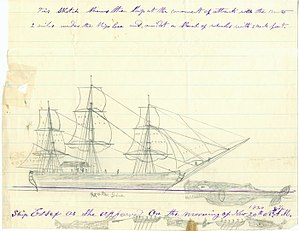
or, Learning How to Read Our Fears
Fear is one of the components of any significant transition, especially those made in midlife and later. At least the fear that accompanies these transitions seems to have a different flavor, maybe more urgency. But fear finds all of us at some point in our lives. We are human; therefore, we have fears. The question is, what do we do with or about them.
Karen Thompson Walker, author of The Age of Miracles, gave a TED talk in June 2012 called “What Our Fears Can Teach Us.”
As we grow up, we’re often encouraged to think of fear as a weakness, just another childish thing to discard like baby teeth or roller skates. And I think it’s no accident that we think this way. Neuroscientists have actually shown that human beings are hard-wired to be optimists. So maybe that’s why we think of fear, sometimes, as a danger in and of itself.” Don’t worry,” we like to say to one another. “Don’t panic.” In English, fear is something we conquer. It’s something we fight. It’s something we overcome. But what if we looked at fear in a fresh way? What if we thought of fear as an amazing act of the imagination, something that can be as profound and insightful as storytelling itself?
She has an interesting premise, which is that if we look at our fears as stories, they might be able to teach us something.
Now we might just as easily call these fears by a different name. What if instead of calling them fears, we called them stories? Because that’s really what fear is, if you think about it. It’s a kind of unintentional storytelling that we are all born knowing how to do. And fears and storytelling have the same components. They have the same architecture. Like all stories, fears have characters.In our fears, the characters are us. Fears also have plots. They have beginnings and middles and ends. You board the plane. The plane takes off. The engine fails. Our fears also tend to contain imagery that can be every bit as vivid as what you might find in the pages of a novel….Fears also have suspense.
What Will Happen Next?
Just like all great stories, our fears focus our attention on a question that is as important in life as it is in literature: What will happen next? In other words, our fears make us think about the future. And humans, by the way, are the only creatures capable of thinking about the future in this way, of projecting ourselves forward in time, and this mental time travel is just one more thing that fears have in common with storytelling.
Of all the possible things that could happen next, what fearful outcome(s) do you focus on? What’s your fear story? Walker’s TED talk centers around the 1819 sinking of the whaleship Essex more than 3,000 miles off the coast of Chile–an event that inspired parts of Moby Dick. The ship’s sailors had to make a decision about what to do–mainly which shore they should try to reach.
Walker quotes Vladimir Nabokov as saying that the best reader has a combination of two very different temperaments: the passion of an artist to get caught up in a story and the coolness of judgment to temper his or her intuitive reactions to it.
The sailors of the Essex, Walker says, had the artistic ability to vividly imagine many horrific outcomes–including being eaten by cannibals–but they were unable to apply the coolness of judgment to them. They were not adept at reading their own fear stories.
Reading Our Fears
Who or what are the cannibals in your imagination? Why are they so compelling? What is the likelihood they will actually “get” you? Does their specter swallow your attention and take it away from what actually needs attending to or from seeing things more clearly, more coolly?
Properly read, our fears can offer us something as precious as our favorite works of literature:a little wisdom, a bit of insight and a version of that most elusive thing–the truth.
Watch/listen to the complete TED talk: